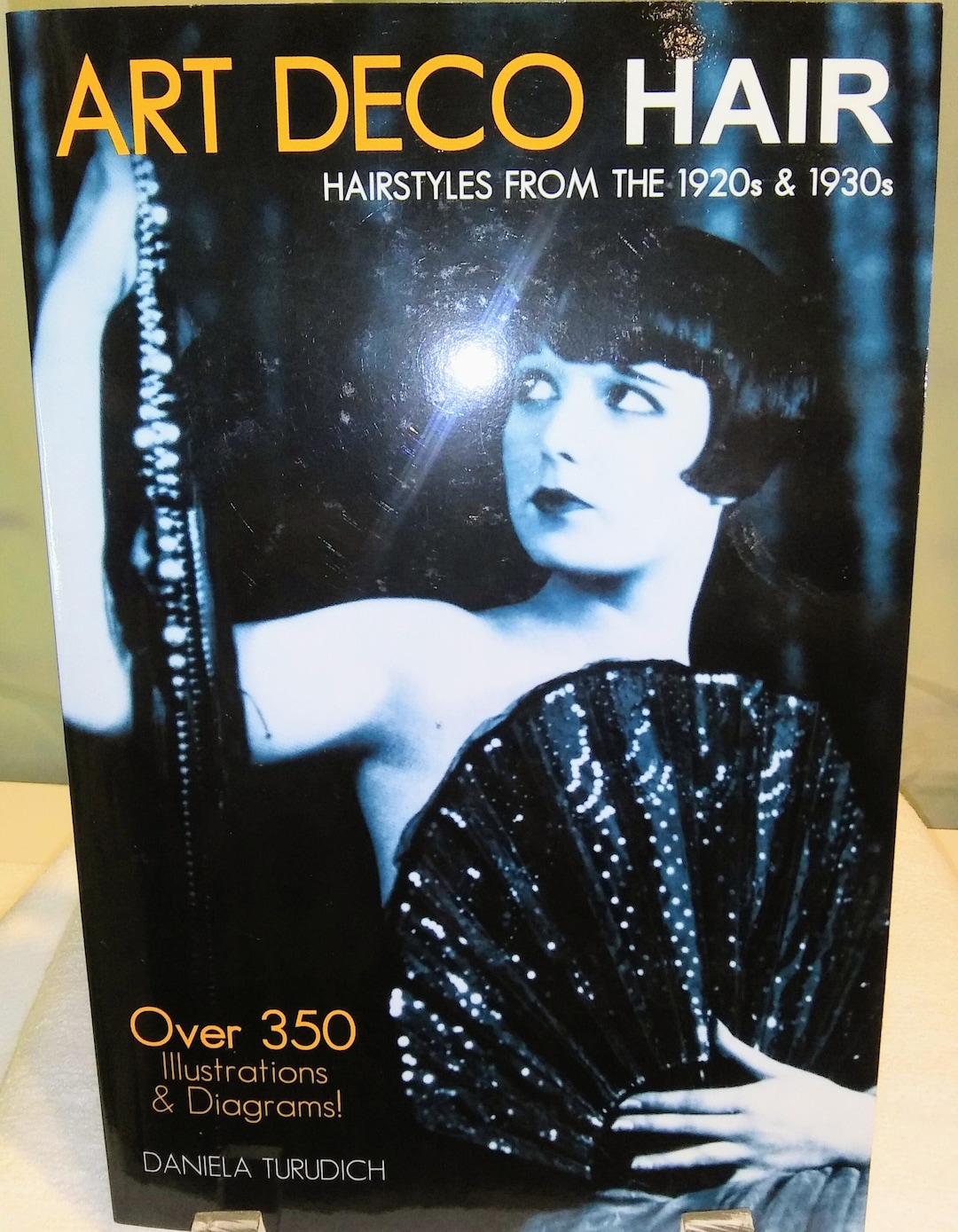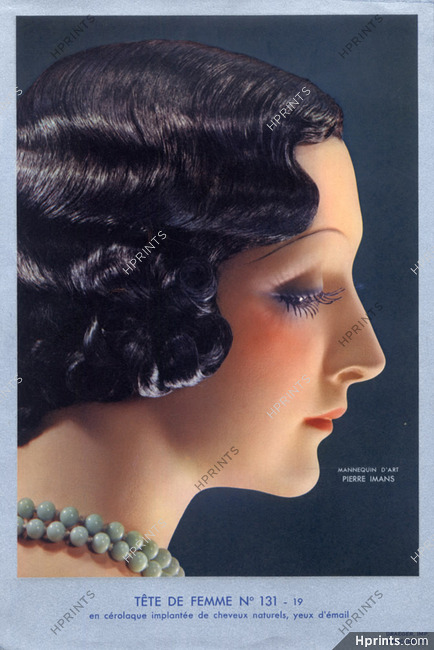Art Deco Hair Hairstyles 1920s and 1930s: An Exploration of Iconic Styles

The Art Deco period, spanning the 1920s and 1930s, represented a monumental shift in design, fashion, and personal aesthetics. This era, characterized by its embrace of modernity, geometric precision, and luxurious materials, profoundly influenced hair fashion, leading to the emergence of distinctive and iconic coiffures. The styles of this transformative period were not merely trends; they were powerful statements reflecting profound societal changes, particularly the increasing independence and evolving role of women. This article delves into the specific aesthetics, cultural underpinnings, and lasting impact of the hair fashion that defined the Art Deco era, providing a comprehensive insight into its enduring appeal and significance.
The Cultural Context and Transformation of Hair Aesthetics
The early 20th century witnessed unprecedented social and cultural upheaval, directly impacting beauty standards. The aftermath of World War I, the burgeoning women’s suffrage movement, and the economic boom of the Roaring Twenties fostered an environment ripe for change. Women, increasingly participating in public life and the workforce, sought liberation from the restrictive corsetry and elaborate, often cumbersome, hairstyles of the Victorian and Edwardian eras. The long, piled-up hair that symbolized traditional femininity gave way to shorter, more practical, and distinctly modern cuts.
This sartorial revolution was further propelled by the rise of cinema and the widespread dissemination of fashion magazines, which showcased new looks to a mass audience. Actresses and socialites became style arbiters, their streamlined bobs and elegant waves inspiring millions. The shift in hair fashion was a visible manifestation of a broader cultural movement towards modernity, efficiency, and a rejection of past conventions. The new styles were perceived as liberating, allowing for greater freedom of movement and embodying the spirit of the “New Woman” – confident, active, and sophisticated.
The Roaring Twenties: Shorter, Sharper Silhouettes
The 1920s are synonymous with radical changes in hair fashion, characterized by an almost universal adoption of shorter styles. The prevailing aesthetic emphasized sleekness, precision, and a somewhat boyish charm, reflecting the era’s dynamism and rebellion.
The Bob: The quintessential hairstyle of the 1920s was undoubtedly the bob. This cut, which varied in length from chin to ear, was a bold statement of modernity. Variations included the blunt bob, cut straight across the nape of the neck, and the shingle bob, which was tapered and layered at the back to hug the head. The Eton crop, an even shorter, almost masculine cut, represented the extreme end of this trend, favored by the most daring flappers. The bob was often styled with a deep side part, enhancing its sharp, geometric lines.
Finger Waves: To complement the short bob, finger waves emerged as a dominant styling technique. This intricate method involved creating smooth, undulating S-shaped waves close to the scalp using a comb, setting lotion, and the fingers. The result was a highly polished, symmetrical look that epitomized Art Deco’s love for geometric patterns and streamlined forms. Finger waves were meticulously crafted, conveying an air of sophisticated elegance and meticulous grooming.
Marcel Waves: Similar to finger waves but created with a heated curling iron, Marcel waves offered a more structured and defined wave pattern. This technique, invented by French hairdresser Marcel Grateau in the late 19th century, gained immense popularity in the 1920s, providing a slightly more voluminous and enduring wave than its finger-set counterpart. Both finger and Marcel waves underscored the era’s demand for precise, sculpted hair.
Accessories: Headbands, often adorned with Art Deco motifs such as geometric patterns, feathers, or jewels, were essential accessories. They served to keep the short hair neatly in place while adding a touch of glamour and personal expression. Cloche hats, designed to fit snugly over the head, further necessitated and popularized the short, sleek hairstyles.
The overall aesthetic of the 1920s hair fashion was one of sleek sophistication, daring liberation, and a celebration of modern femininity. The styles were carefully constructed, reflecting the era’s fascination with engineering and design, translating architectural principles into personal adornment.
The Thirties: Softening and Lengthening
As the world transitioned from the exuberance of the Roaring Twenties into the more somber economic realities of the Great Depression, hair fashion underwent a subtle but significant evolution. While retaining the underlying principles of Art Deco elegance and precision, the styles of the 1930s began to soften, allowing for slightly longer lengths and a more overtly feminine appeal.
The Longer Bob and Shoulder-Length Hair: Hair began to grow out from the extreme shortness of the previous decade. The bob extended to chin or shoulder length, often with a more rounded or feathered finish. This allowed for greater versatility in styling while maintaining a sense of modern chic.
Soft Waves and Curls: The rigid finger waves of the 1920s gave way to softer, more natural-looking undulations. Pin curls became a prevalent technique for creating gentle, flowing waves and loose curls, often brushed out for a glamorous, voluminous effect. These styles still emphasized precision but with a less severe, more romantic touch. The “peek-a-boo” bang, often created by a deep side part and a wave that partially obscured one eye, became iconic, popularized by Hollywood stars like Veronica Lake.
The Pageboy: This classic style, characterized by hair that falls to the shoulders and curls inward, often with a side part, gained prominence. It offered a neat, polished appearance that was both sophisticated and manageable.
Glamour and Sophistication: Hollywood played an even more significant role in shaping 1930s hair fashion. Actresses such as Jean Harlow, Greta Garbo, and Carole Lombard epitomized the era’s glamour, showcasing elegant, flowing waves and sophisticated updos. The emphasis shifted towards creating a dramatic frame for the face, often achieved with deep side parts and meticulously styled waves that cascaded over the shoulders.
Hairnets and Snoods: For women with longer hair, decorative hairnets and snoods became fashionable accessories. These practical items kept hair neatly contained while often featuring intricate Art Deco-inspired designs, adding a touch of elegance to everyday styles.
The hair fashion of the 1930s, while evolving from its 1920s predecessor, continued to embody the Art Deco spirit through its emphasis on clean lines, carefully constructed forms, and a blend of modernity with timeless elegance. The styles reflected a desire for glamour and sophistication even amidst economic hardship, offering an aspirational image of beauty.
The Art Deco Aesthetic in Hair
The core tenets of the Art Deco movement—geometric precision, streamlined forms, modernity, and luxury—were meticulously translated into the hair fashion of the 1920s and 1930s. The sharp lines of the bob, the architectural undulations of finger waves, and the sleekness of longer, sculpted styles all echoed the design principles seen in contemporary architecture, furniture, and art. These coiffures were carefully engineered, symmetrical, and balanced, transforming hair into a sculpted work of art. The rejection of fussy, ornate styles in favor of clean, efficient lines was a direct reflection of the era’s forward-looking ethos. The meticulous grooming required for these looks underscored a commitment to personal presentation and an appreciation for sophisticated beauty, making these styles enduring symbols of an innovative and glamorous age.
FAQs
Q: What defined the distinct characteristics of hairstyles from the 1920s compared to the 1930s?
A: Hairstyles of Short Hairstyles For Over Ladies An Extensive Guide To Elegance And Practicality the 1920s were predominantly shorter, featuring sharp bobs, shingle cuts, and very close-to-the-head finger or Marcel waves, emphasizing a sleek, almost boyish silhouette. The 1930s saw a softening and lengthening of styles, with hair often reaching chin or shoulder length, styled into softer, more flowing waves and curls, offering a more overtly feminine yet still sophisticated appearance.
Q: How did societal changes influence the adoption of these particular hair aesthetics?
A: Post-World War I societal shifts, including increased female independence, women’s suffrage, and changing roles in the workforce, led to a rejection of restrictive, traditional long hairstyles. Shorter, more practical, and modern cuts symbolized liberation, efficiency, and the “New Woman” of the era.
Q: Were these styles accessible to all women, or primarily to specific social strata?
A: While initially popularized by socialites and Hollywood stars, the influence of cinema and fashion magazines made these styles widely aspirational and accessible across various social strata. Hairdressing salons became more common, offering services to a broader public, though maintaining the more intricate styles required time and resources.
Q: What tools and techniques were essential for achieving these iconic looks?
A: Key tools included sharp scissors for precise cuts, fine-tooth combs for shaping, setting lotions for hold, and duckbill clips for finger waves. Heated curling irons were used for Marcel waves, and pin curls became crucial for creating the softer waves of the 1930s.
Q: Does the influence of these historical styles persist in contemporary fashion?
A: Yes, the influence of these historical styles is enduring. Modern fashion frequently draws inspiration from the sleek bobs, elegant waves, and geometric precision of the Art Deco era. Elements such as finger waves and deep side parts periodically reappear Shoulder Hairstyles With Bangs A Comprehensive Guide To Versatility And Style on runways and in popular culture, demonstrating their timeless appeal.
Tips
Achieving a 1920s bob requires a precision cut, ensuring blunt lines and careful shaping around the face and nape. For authentic finger waves, the use of a strong setting lotion, a fine-tooth comb, and duckbill clips is paramount. Patience and practice are essential for creating consistent, deep undulations that hug the head. Recreating 1930s soft waves often involves utilizing pin curls or heatless rollers to produce gentle, flowing curves. A deep side part significantly enhances the authenticity of these styles. Selecting appropriate accessories, such as headbands, barrettes, or hairpins featuring geometric patterns or streamlined designs, effectively complements the aesthetic. To fully embody the period’s elegance, consideration of the overall ensemble, including makeup and attire, is beneficial.
Conclusion
The hair fashion of the 1920s and 1930s stands as a powerful testament to an era of profound transformation. These styles, characterized by their embrace of modernity, geometric precision, and sophisticated elegance, were more than mere trends; they were visual declarations of changing societal norms and the evolving identity of women. From the liberating bobs and sculpted waves of the Roaring Twenties to the softer, glamorous undulations of the Thirties, each coiffure reflected the spirit of the Art Deco movement. Their enduring legacy in fashion and beauty underscores their significance as symbols of innovation, independence, and timeless style, continuing to inspire and captivate audiences today.







More suggestion: Short Bob Sew In Weave Hairstyles A Comprehensive Guide To A Timeless Protective Style